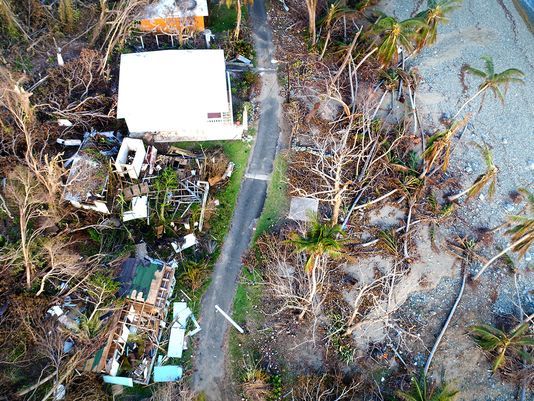SAN JUAN — After Hurricane Irma and then Maria tore through the Caribbean islands, the United Nations swung into action with helicopters, food drops and multimillion-dollar recovery plans.
But even though both Puerto Rico and the Virgin Islands were decimated by the hurricanes, they couldn’t call the U.N. – an expert in disaster relief – for help.
Except they aren’t states like any other.
“That is the awfulness of being a territory,” said Jose Fuentes, chairman of the Puerto Rico Statehood Council. “You have no political power within your own government and you don’t have the ability to do anything internationally because everything has to go through the U.S. State Department.
“The territories are marginal, they are invisible, and they have no voice in Washington because you need a vote to have a voice,” she said. “You’ve got these populations of American citizens living in these territories, but most Americans don’t understand that they are American citizens.”
A September poll conducted by Morning Consult, a media and polling firm, showed that only 54 percent of Americans surveyed knew that Puerto Ricans were fellow U.S. citizens.
The United States has five populated territories around the world plus a smattering of islands that are little more than unpopulated specks in the Pacific Ocean. Puerto Rico, with a population of 3.4 million, is by far the largest. The other populated territories are the U.S. Virgin Islands, which include St. Thomas, St. John and St. Croix and 50 smaller islands and cays; American Samoa;, Guam, and the Northern Mariana Islands.
Puerto Ricans and U.S. Virgin Islanders are American citizens – but they can’t vote for president unless they move to the mainland, and their representatives in the U.S. House can’t cast votes in Congress.
U.S. dollars are the currency in the two territories, but they don’t receive proportional federal funding for programs such as Medicaid.
Not all the rules and regulations governing the two territories are the same, and they came by their territorial status through different routes. The Virgin Islands were under Danish rule until 1917, when the United States purchased them for $25 million to shore up U.S. defenses in the Caribbean during World War I.
In the weeks since Hurricane Maria slammed Puerto Rico, the government estimates that 40,000 Puerto Ricans have migrated to the mainland, many to Florida. Residents of the U.S. Virgin Islands also have gone to the U.S mainland since the one-two punch of the hurricanes.
If Puerto Rico, where the hurricane death toll now stands at 51, suffers from an invisibility problem in the minds of many Americans, then multiply that many times over for the U.S. Virgin Islands, with its population of only about 110,000.
While the media is now focused on Puerto Rico’s destroyed power grid and ongoing shortages of food and water, many U.S. Virgin Islands residents are facing similar deprivations but without the attention.
“Why are people who live in the U.S. Virgin Islands not as important as people who live in other places?” asked Stacey Plaskett, the USVI representative in Congress. “Our lives have been forever changed and we need support.”
Many schools are still too damaged to reopen. Others were destroyed or are still in use as shelters. Limited curfews are still in effect. “We lost much of our economy. Many of our resorts are destroyed, and tourism accounts for about 50 percent of the GDP. Many resorts will be lost for this year and next year,” Plaskett said.
So while they wait for more substantial help, Virgin Islanders are trying to start the recovery themselves. “Distance and remoteness is something the USVI has had to live with. At the end of the day, we have to help ourselves,” said Andrew Clutz, who works for the territory’s Economic Development Council.




